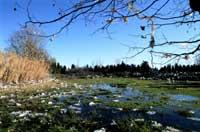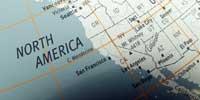A plastic patch in the Pacific

The waste that reaches the north of the Pacific Ocean ends in an endless spiral, inexorably forward and backwards. There is a circular current that rotates in the same sense as the clock needles. When coming into contact with this current, the remains are there, as when the wind accumulates leaves and papers in a corner of the square. For several years the residues that have entered this spiral are accumulating, and it is already a waste patch equivalent to a third of the European surface of 3.43 million square kilometers.
Plastic problem plastic
The truth is that this has been so forever, that is, the Pacific has always had that current and the waste has always reached there. But until a few years ago it was not a problem, because aquatic living beings decomposed these residues and, therefore, did not accumulate. About a century ago, however, the human being invented a product very difficult to decompose or degrade: plastic. The use of plastic spread quickly, since in addition to being very durable, it is light and cheap and can be used almost for everything

Its use has made plastic waste also enormously numerous and varied. We generate about 135 billion kilos of plastic per year in the world and only recycle a small part. The rest, for the most part, accumulates in landfills and, as already mentioned, part ends in the oceans.
When it reaches the oceans, the plastic breaks by effect of the sun, wind and current into smaller fragments, but maintains its composition. Thus, in the oceans, and of course in the Pacific patch, pieces of plastic of any size and shape that comes to our heads are accumulated. Their animals have great problems with plastics: on the one hand, they are stuck with nets launched by fishermen, etc., and on the other, they mix plastic pieces with food. So they eat them, but they cannot digest them. Thus, they do not feed enough despite eating and eating.

As if it were not enough, many scientists are warning of another danger to these plastics. Plastic granules absorb toxins that do not dissolve in water, such as DDT or PCB, since plastic polymers tend to associate with these substances. A study found that the concentration of these toxins in plastic grains is a million higher than in the water in the area.
Imagine the heap of toxins that stick into your body when animals eat plastic grains! In addition, these substances act as sex hormones in the animal body, since the body is unable to differentiate between the real hormones and these substances, causing enormous imbalances in animal reproduction. Logically, this influence extends to the entire trophic chain, since the animals that have introduced toxic are prey to others, others, etc.
The solution is as complex as the problem. It would be as difficult as sterile to remove from the oceans all the plastic that has been accumulating for so many years, because we increasingly produce more plastic. We should radically change our plastic culture. Did we get it?
Published in 7K.
Buletina
Bidali zure helbide elektronikoa eta jaso asteroko buletina zure sarrera-ontzian











